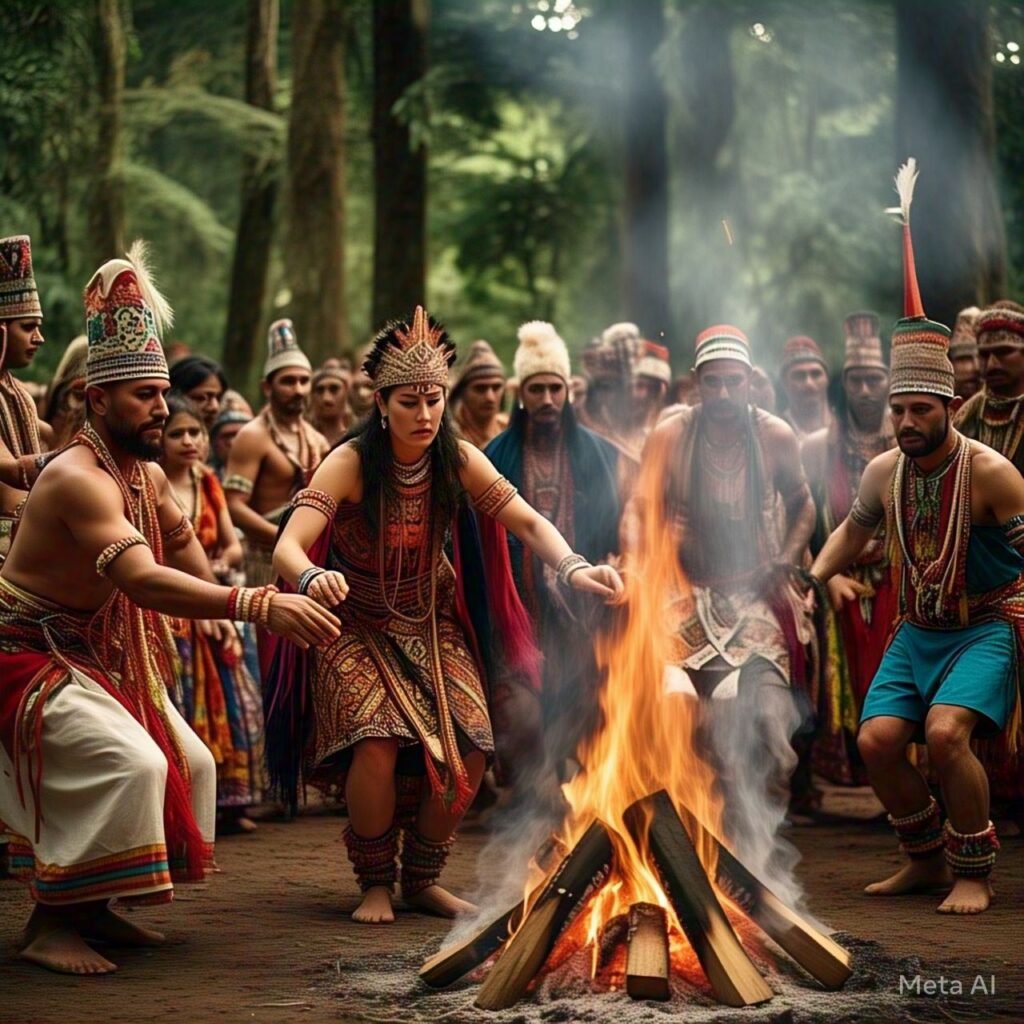
When I travel, participating in local festivals and celebrations is one of the things I love most.
Participating in or simply witnessing cultural traditions worldwide—be it a religious gala, a seasonal celebration, a rite to repel evil, or a ritual for good luck—can create an indelible travel experience.
In this new series of posts, I’ve collaborated with over 60 travel writers who share their favorite festivals, rituals, and ceremonial experiences in their home countries or while traveling abroad.
Amazing Cultural Traditions Across the Globe
The first installment of the series examines 16 intriguing and lovely cultural practices worldwide, spanning locations such as Bali, Mexico, Finland, and Ethiopia.
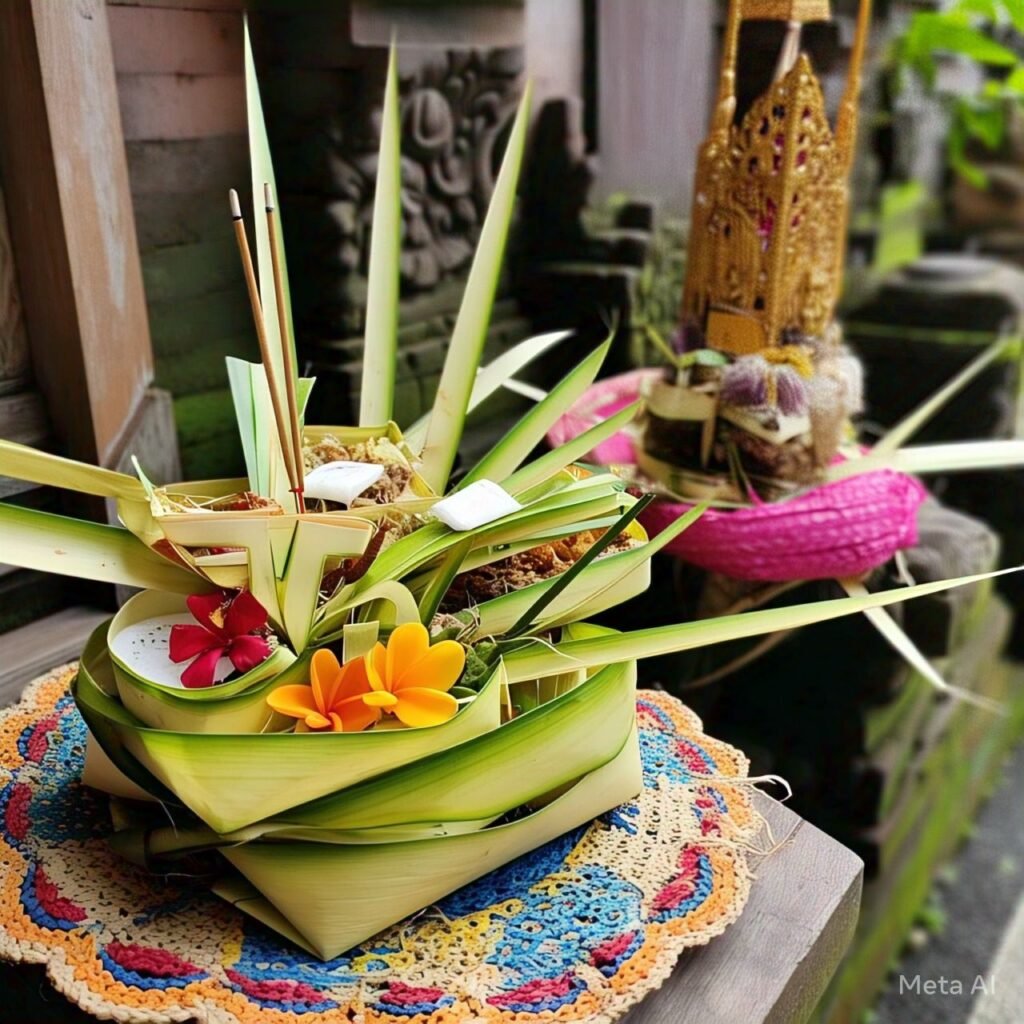
offering of Canang Sari.
Upon your arrival in Bali, one of the first things you’ll notice is the intricately woven palm frond baskets scattered around the streets. The bright-green baskets, filled with colorful flowers and burning incense, were carefully placed and often contained scraps of food for stray animals. They became a symbol that will forever remind me of the island.
For the past millennium, this ancient tradition has persisted among the Balinese, with offerings created daily and stacked atop temples and in doorways.
Canang Sari has its origins in Hinduism. However, for many Balinese individuals I encountered, it is more about tradition than religion in the present day. Individuals who do not adhere to Hinduism also take part in the daily making of the Canang Sari. It is the women who are tasked with weaving and making the offerings.
Moreover, what you utilize and the arrangement of all elements carry importance. As an illustration, red betel nut is part of the offerings to Shiva (who is one of the three principal Hindu gods). Coins can be added as a gesture of selflessness. Furthermore, the arrangement of the colored petals (to the East, West, North, and South) represents supplications to various gods.
Once the offering has been crafted with care, it is set down on doorsteps, on top of statues and motorbikes, and along the sidewalks. A jepun flower is placed on top of the basket, and water is sprinkled over it while a small prayer is recited.
Prayers express thankfulness and convey the desire for another day of balance and peace in the world. This ceremony honors the world’s positive and negative balance, something that Bali holds dear. The Barong/Rangda figures from Balinese mythology, along with the black checkered patterns found on numerous statues and temples, represent this equilibrium between good and evil.
In addition to merely observing the early morning streets being adorned with these exquisite offerings, tourists have the opportunity to assist in their creation.
Initiate a chat with the owner or host of your accommodation. If you show that you want to help with the preparation of the Canang Sari, most people will gladly teach you about the tradition.
Yi Torch Festival, located in Yunnan province of China

Torch Festival in Yunnan. Photo by The Gone Goat.
Nestled in the mountains of China’s Yunnan Province, where many of the country’s ethnic minorities live, is the distinctive Torch Festival. For three days, torches blaze outside houses and illuminate the hills as carriers move about in the vicinity. In addition to the Naxi ethnic group, the Yi, Bai, Jino, and Lahu also celebrate the Torch Festival.
During the festival, individuals are invited to dance around the fire as a way of expressing their wishes and seeking a bountiful harvest year. Fire has been worshiped by the Yi ethnic group for millennia. It’s quite amazing to take part in these cultural festivities that have the purpose of banishing malevolence from their villages.
In the Chinese Lunar Year, celebrations take place on June 24 or June 25. The event spans three days and includes a variety of activities such as horse racing, bullfighting, archery, wrestling, tug-of-war, swing matches, and other amusements.
Post-festival, tourists can relax and explore some lesser-known attractions in China‘s Yunnan Province, including Napa Lake, the Old Town of Shangri-La, and the White Horse Snow Mountain and Haba Snow Mountain.
By The Gone Goat’s Pashmina
Finland’s Midsummer Celebrations

Midsummer, a celebration of summer and light, has a long-standing history. In Finland, it is celebrated on a Friday (or practically, during the long weekend surrounding it) between June 20 and 26.
The main customs consist of spending time outdoors with loved ones, sauna visits and lake or sea swims, as well as bonfire watching. Traditionally, bonfires were thought to scare off evil spirits and demons. Typical dinner consists of barbecue or salmon with dill and new potatoes, followed by fresh strawberries for dessert.
The day before Midsummer, nearly everyone escapes the city to their summer cabins in the countryside. If you don’t relish the experience of an almost desolated capital, this is not the best time to visit Helsinki!
If you are still intending to go to Finland around Midsummer and can’t locate a cottage for a getaway, there is a customary Midsummer festivity with a bonfire that visitors can participate in on Seurasaari island.
Midsummer occurs near the time of the summer solstice. Even at Finland’s southernmost point, the sun doesn’t go down until it nears midnight; in the northern regions of the country, it remains daylight throughout the night.
Although the temperature fluctuates annually, being outdoors as much as possible is important to Finns. If you’re fortunate to receive an invitation, it’s wise to bring warm clothing and mosquito repellent as a precaution.
There is also a magical aspect to midsummer traditions, particularly for unmarried women. They say that if you gather seven wild flowers and put them under your pillow overnight, you will dream of your future husband!
Durga Puja celebrated in the Indian state of West Bengal

West Bengal welcomes numerous guests from across the globe each year for its Durga Puja festival, known as Durgotsav.
This festival commemorates the goddess Durga’s triumph over the formidable and cunning demon Mahishasura. Therefore, the festival symbolizes the triumph of good over evil and is celebrated lavishly across the state.
Every year, I eagerly anticipate this festival as it provides an opportunity to return to my hometown for a few days, reconnect with family and old friends, and relish those five carefree days. We don’t think about sleep as we go from one pandal (canopy) to another, spending time outside well beyond our bedtime.
The documented history indicates that the first major worship of Goddess Durga took place in the late 1500s, initiated by the landlords of Dinajpur and Malda who started the first Durga Puja in West Bengal.
The community Puja originated thanks to a dozen friends from Guptipara (Hoogly district, West Bengal) who worked together to raise funds from their neighbors for the ‘Baro-Yaari’ Puja (also known as the ‘Twelve-Pal’ Puja). This event took place in 1790.
Today’s Durga Puja is a festival of inventiveness. Pandals and idols have transformed into a means of demonstrating creativity while simultaneously preserving our culture and traditions.
Aside from the rituals, this festival is also about its people. Anyone planning to visit West Bengal for Durga Puja should only heed this advice: arrange flights and lodgings in advance, as it will be hard to find available hotels as the date approaches.
Visitors can either rent a car or explore on foot. I encourage visitors to join in the Dhunuchi Nitra dance, which is performed to impress the goddess, or take part in the Sindoor Khela, where married women apply auspicious vermilion on each other’s foreheads as a prayer for a joyful marital life.
Authored by Anwesha of Going Places With Anwesha
Timkat celebration in Ethiopia

In January, the Timkat festival occurs, marking Ethiopia’s most significant celebration in this often-overlooked nation. The Timkat festival commemorates the Ethiopian Epiphany, which marks the baptism of Jesus Christ. The Ethiopian Orthodox community regards this festival as very significant.
The baptism is re-enacted during the three-day festival. Thousands of individuals clad in white robes assemble for magnificent processions, engaged in chanting, dancing, and praying. Tabots, which are models of the Ark of the Covenant, are transported to a body of water on the first day.
On the second morning, numerous ceremonies and prayers take place around the body of water, featuring priests in vibrant robes, umbrellas, red carpets, and abundant incense. At the end of the ceremonies, the church leader blesses the water. The attendants are then sprinkled with Holy Water for their annual baptism.
The Timkat festival occurs starting January 18th. Addis Abeba, Gondar, and Aksum are the top locations to experience the festival. Throughout Ethiopia, Timkat is celebrated. I enjoyed the Timkat festival celebration in Aksum, as there were not so many other travelers.
Please remember that Timkat holds great significance for Ethiopian Orthodox individuals and is not intended as a tourist attraction. Maintain your distance and refrain from taking photographs so as not to disrupt the ceremony.
There is no charge for attending the ceremony. Should you have the opportunity to take part in it, the Timkat festival will be a standout feature of your travels in Ethiopia.
Manouk von Bunch of Backpackers
Mexico’s Hanal Pixán

Mexico is home to over 40 distinct indigenous cultures, many of which commemorate a day in early November to pay tribute to deceased loved ones.
The Maya communities of the Yucatan Peninsula commemorate the Day of the Dead with a festival called Hanal Pixán (‘Food for the Spirits’).
The traditional green cross is always present on the Hanal Pixan altar. This was introduced by the Spanish as a means of reconciling Catholicism with the symbol of Ya’axhce, the sacred Mayan ceiba (baobab) tree.
The cuisine resembles that of Día de Muertos festivities across Mexico but features unique elements: pib, the enormous traditional Hanal Pixan tamales; dulce de papaya, a candied version of papaya (substituting for the usual pumpkin delicacy); and atole that frequently has hints of tropical coconut.
During the night, tourists can join the Paseo de Animas procession in Merida, which moves from the town center to the cemetery. Here, a multitude of individuals convene, their faces painted and attired in customary white garments.
The many altars around the city that pay tribute to the deceased can be visited by people of all ages, and everyone is invited to find out more about this significant holiday. The week features dances, skits, and puppet shows that recount the history, as well as contests for the best pib.
From Kid World Citizen, by Becky
In Seoul, South Korea, Buddha’s Birthday is celebrated.
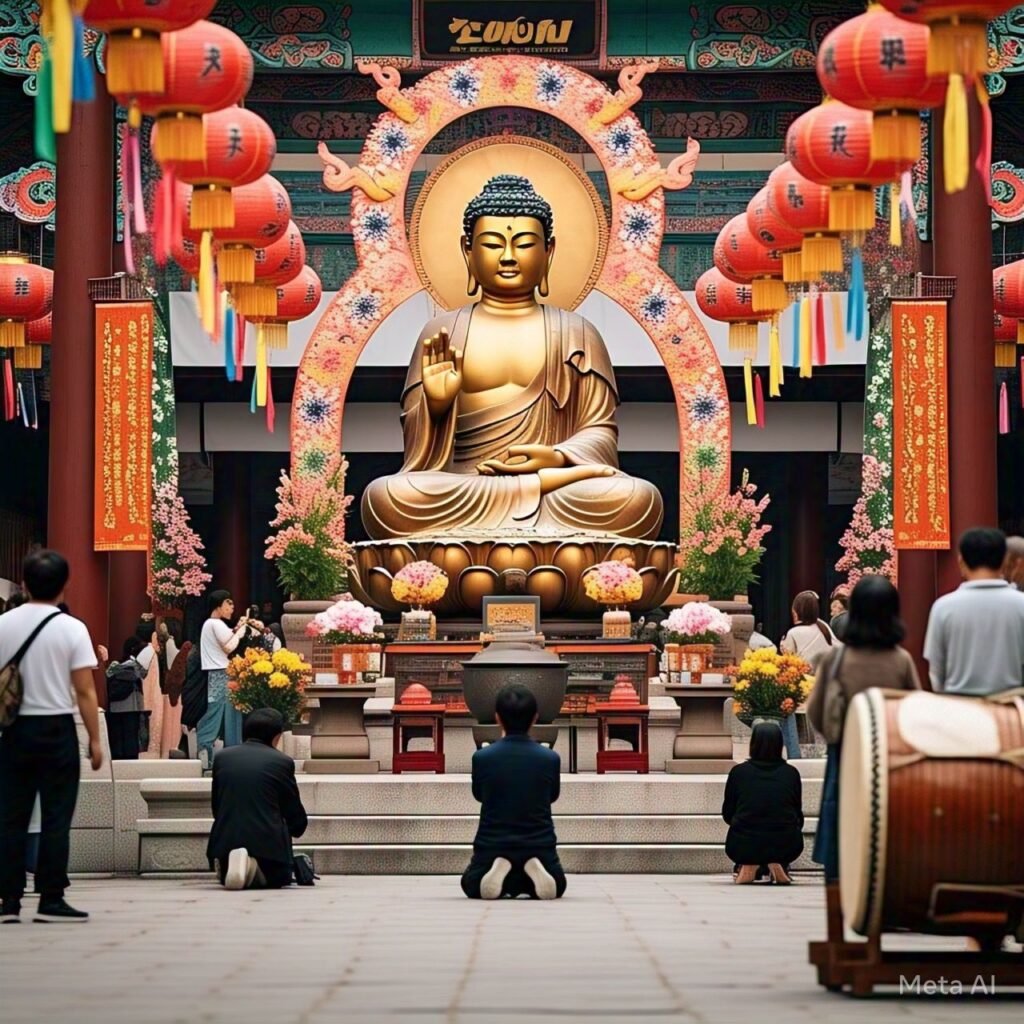
In South Korea, Buddha’s Birthday is one of the rare holidays where nearly everyone has three consecutive days off (the day before, the actual day, and the following day). The festival occurs on the eighth day of the fourth month of the lunar calendar.
Central Seoul, particularly the Jogyesa Buddhist temple, may be the ideal location to watch and take in the celebrations. Devotees will either pour water over the head of a baby Buddha statue using a ladle or contribute to the monks. Tourists have the option to do either, or just stroll around a beautifully adorned temple.
In the evening, attention typically turns to the Lotus Lantern Parade, a major event in Seoul. The parade takes place along numerous major downtown streets in Seoul, and it always draws huge crowds!
If you’re looking for a more low-key event, check out the lantern displays along Cheonggyecheon Stream. All of these events are free and open to the public, although some craft-making activities may incur a small fee.
Outside of Seoul, nearly every Buddhist temple will commemorate the holiday in some form. Temples that are larger and more renowned are more prone to host large celebrations.
Mama Negra from Ecuador
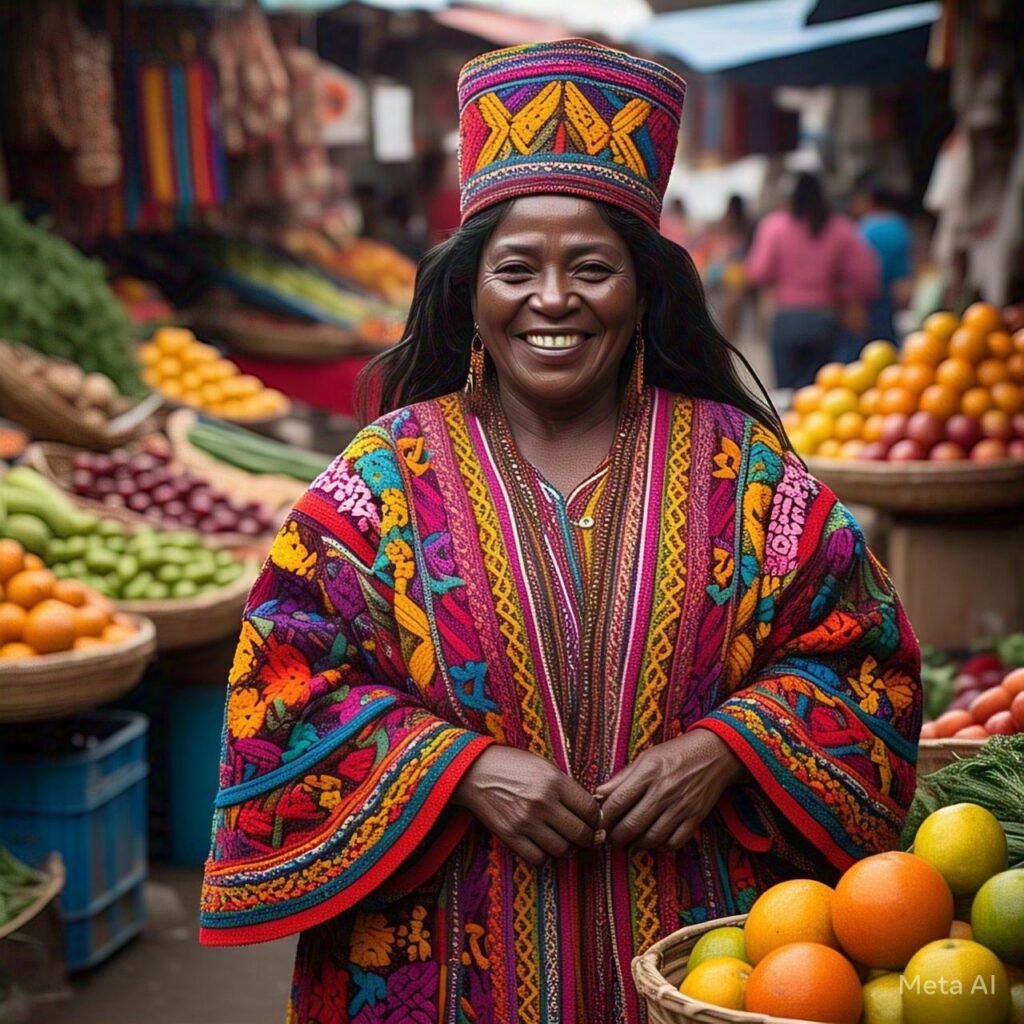
Ecuador is located on the ring of fire, and its volcanoes serve as a current reminder of nature’s power. Latacunga is located at the foot of the mighty Cotopaxi, a volcano that remains active.
The year 1742 marked a phase of intense activity for Cotopaxi, causing the local inhabitants to fear for their town’s safety. They begged for their lives to the Virgin of Mercy, the volcano’s patron saint. According to legend, she was merciful, and in return, the citizens honor her every year in the Mama Negra Festival.
It is customary to have two dates for the celebration. The first is the weekend nearest to September 23-24, and the second falls on Latacunga’s independence day, November 11. The festival blends traditions with influences from African, Spanish, and Mayan cultures.
As part of the festivities, residents perform street dances and carry splayed pig carcasses in a procession through the city. All day long, these hefty pigs are carried around before being offered to the Virgin of Mercy.
Even though this celebration doesn’t draw many tourists, the locals are eager to engage travellers. Alcohol is distributed to the throngs, and onlookers are invited to join in the procession. Although it may initially seem overwhelming, it will undoubtedly be a celebration that remains etched in your memory!
Sheree from Winging the World
Yanshui, Taiwan’s Beehive Fireworks Festival
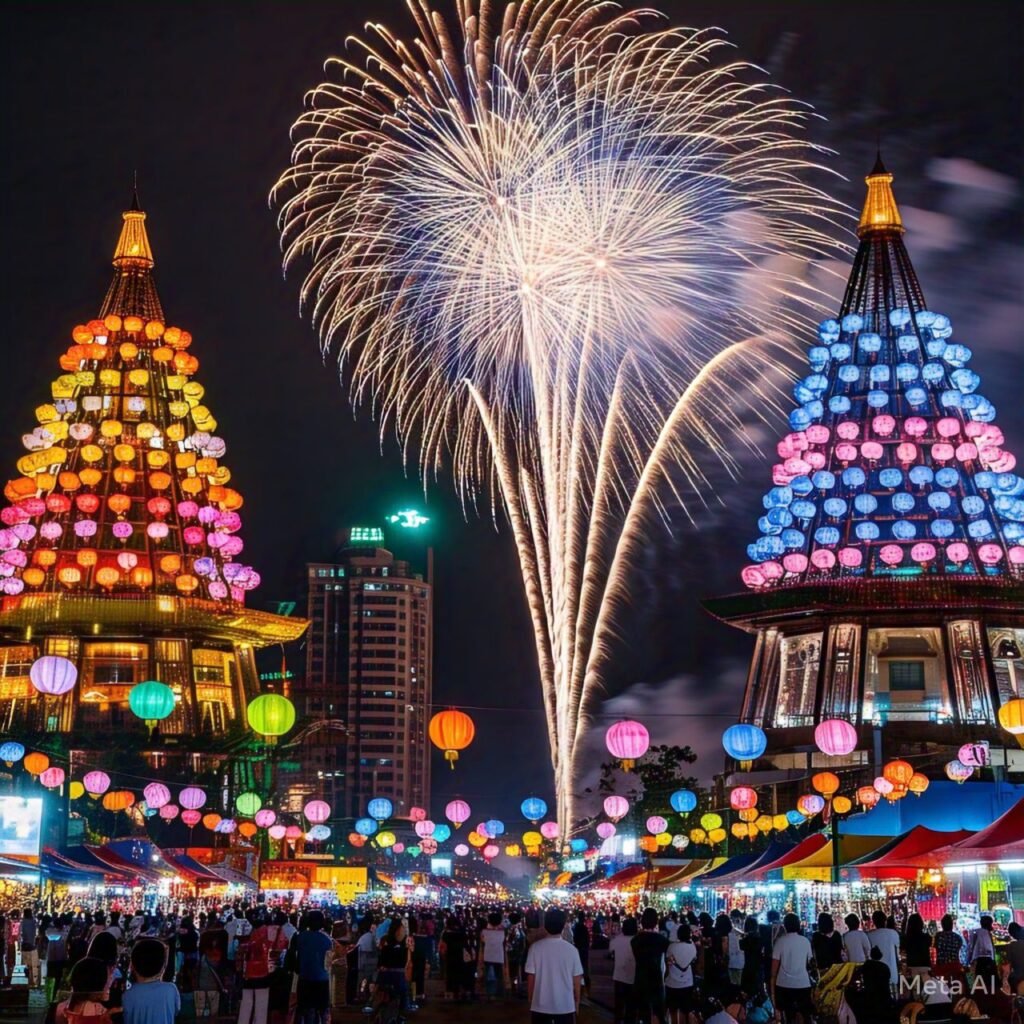
In Southern Taiwan, the Yanshui Fireworks Festival has been dubbed one of the most perilous festivals globally.
Each year, the dormant village in the countryside awakens with a two-day parade during which hundreds of thousands of bottle rockets are fired not skyward but straight into the throngs of revelers from nearby.
People from all over the country come to travel here in hopes of being struck by one, as it is deemed lucky in Taiwanese culture.
The festival originated in the late 1800s, during a time when cholera was rampant in the area. To drive away the evil spirits responsible for the illness, local villagers marched a statue of Guan Yu, the war god, through the area while igniting firecrackers.
It appeared to have been successful, leading to the establishment of an annual tradition. However, as time passed, they started to launch firecrackers and rockets in several directions simultaneously from tiered structures that looked like beehives, which is how the festival got its name.
Everyone can join, but participants are required to wear full-body protection, including a helmet. My father and I discovered this during the event: when the bottle rockets begin firing, you must jump up and down to prevent them from getting lodged on you and igniting your clothes. We experienced this a few times!
From Nick of Spiritual Travels
Lucia during the Swedish Christmas season

If you find yourself in Sweden around mid-December, you can’t miss this! Lucia, which is observed on December 13th, ranks among the most popular Christmas traditions in Sweden. The reason for its celebration isn’t entirely clear, even to the Swedes.
According to the old almanac, Saint Lucia’s feast day on December 13 was known as Sweden’s darkest night. This could be why this cherished tradition exists.
Churches are the usual venue for the Lucia celebration. A procession occurs featuring a girl with a candle wreath in her hair, accompanied by a group of girls carrying candles and boys holding a star on a stick. All are attired in white gowns and sing Christmas songs for the crowd.
It is common for the Lucia entourage to perform in the early morning hours. Whenever I return to Sweden for Christmas, I always ensure to see Lucia – I’ve always considered it a lovely and warm tradition.
As a tourist, you can participate in the celebration in various ways. It would probably be easiest to contact a church directly, but you can also inquire at your hotel or the nearest visitor information centre. Lucia is honored nationwide, and if you find yourself in a larger city, chances are there will be numerous choices available to you!
Tak Bat in Luang Prabang, Laos
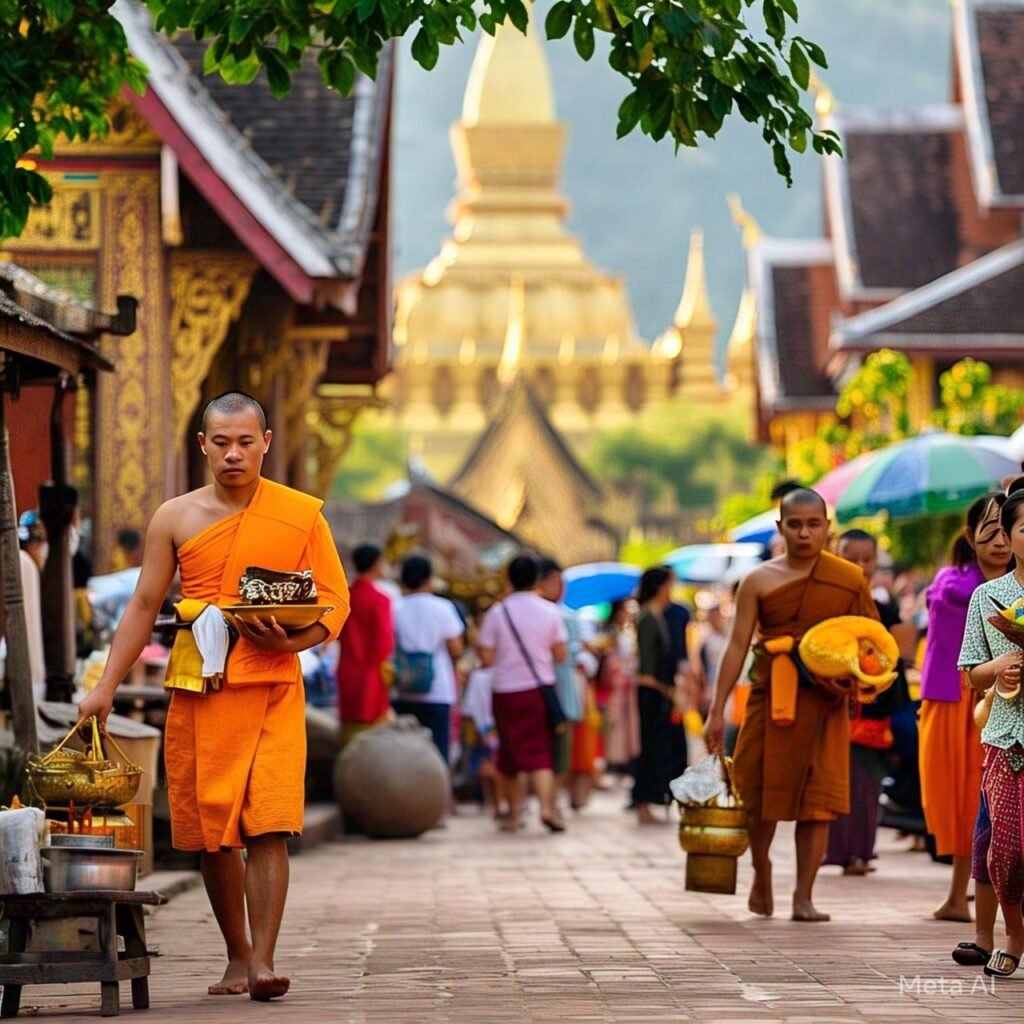
In Luang Prabang, Laos, the Morning Alms Giving—known as Tak Bat—is a highly debated tourist attraction. As soon as the sun rises, Tak Bat is a ceremony where monks gather their daily food from the public.
In recent years, the authorities in Luang Prabang have been concerned about this because of some tourists’ disrespectful behavior.
Since the 1600s, the ceremony has existed and is regarded as sacred by the locals. If you intend to go to Luang Prabang or any other region of Laos to witness Tak Bat, be sure to familiarize yourself with the rules.
Keep your distance from the ceremony to avoid disturbing participants, refrain from using flash when taking photos, and maintain silence during the event.
Before joining the Alms Giving Ceremony, be sure to consult your hostel manager or locals first.
Yi Peng (Loi Krathong) festival in the North of Thailand

The Buddhist festival Yi Peng (or Yee Peng), mainly observed in Northern Thailand, includes the ritual of releasing paper lanterns known as khom loi.
Buddhists hold the belief that releasing a lantern on the full moon liberates them from bad luck accumulated over the past year.
In Thailand, the largest Yi Peng lantern festival takes place in Chiang Mai, which was once the capital of the Lanna kingdom. Due to the festival being rooted in the Thai lunar calendar, the specific dates for the lantern festival vary annually; however, it generally occurs around November’s full moon.
While you take in the festival, remember that although the ceremonies are quite lovely, for Buddhists it is a major religious festival. Tourists are advised to wear suitable clothing, keep their voices low, and avoid blocking individuals as they release their lanterns.
In addition, the amount of inorganic waste produced by Yi Peng is considerable: The lanterns are primarily constructed from rice paper, with a bamboo or wooden frame and wire to secure the candle or flammable coil. After the celebrations, most of these lanterns end up on the ground, in trees, and in the river.
If you are not Buddhist, it might be wise to limit your involvement to observing the religious ceremony rather than releasing your own lantern.
To witness the Yi Peng lantern festival in Chiang Mai, make your way to Nawarat Bridge and proceed along the Ping River in a southerly direction.
Wat Chai Mongkhon is an ideal spot for watching the Chiang Mai lantern festival, as monks assist locals and visitors in safely letting go of lanterns. Another good location is Wat Phantao in the Old Town.
Be aware that monks have stopped the practice of releasing lanterns in the Old Town; they now light them and use wire to hold onto floating lanterns.
Karneval in Deutschland
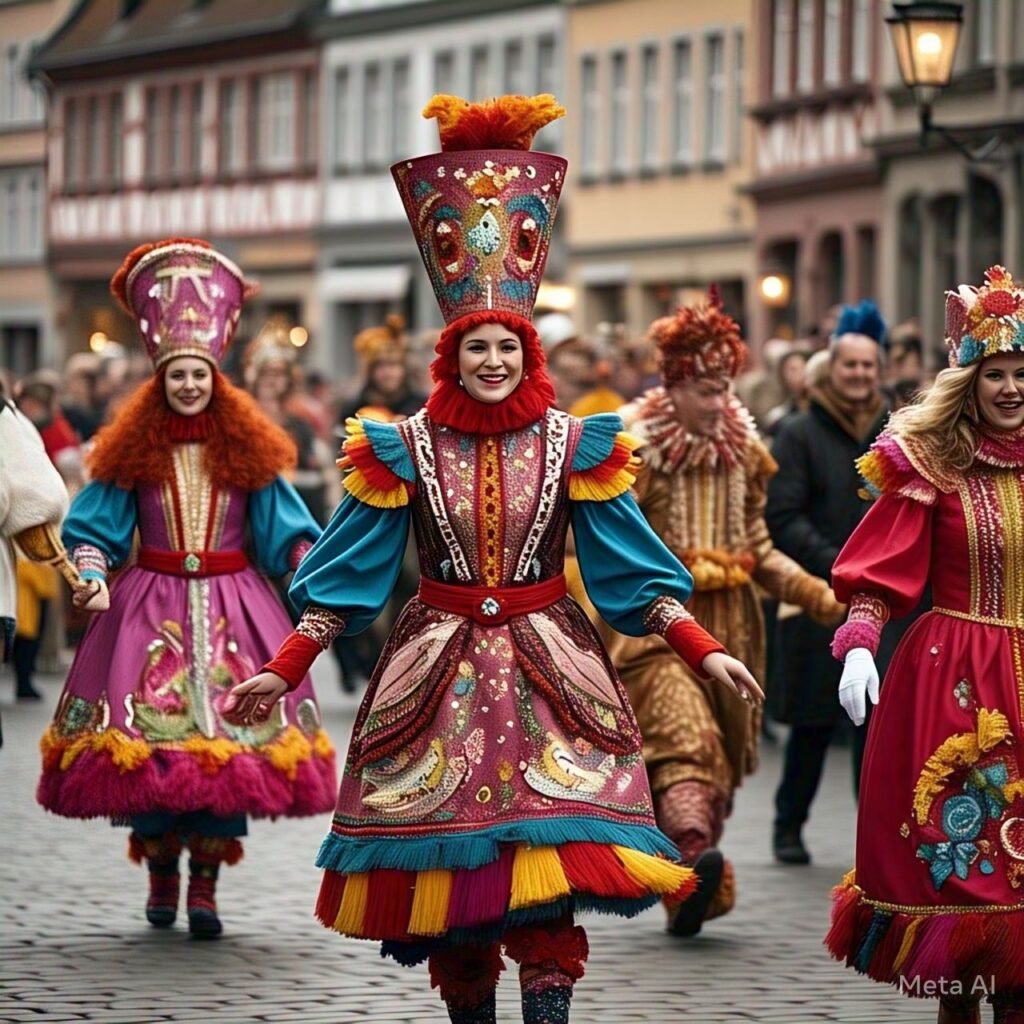
If your travel plans include Germany in January or February, don’t miss the chance to experience a Fasching parade. The parades occur in the week leading up to Ash Wednesday, concluding on Shroud Tuesday night.
Fasching, or Karneval, consists of a week filled with celebrations and parties, culminating in a grand parade featuring masked figures, floats, music bands, and some playful antics.
Its origins trace back to pagan times, when it served to ward off the winter’s evils and promote the arrival of spring with abundant harvests. It is linked to the Christian church festivals, where everyone would relax a bit before the arrival of Lent.
Fasching is suitable for children, even though some masks may be somewhat frightening. Die Teilnehmer der Parade werfen auf dem Weg Süßigkeiten aus.
Be cautious if you have teenagers, as they might be whisked away for some fun (like being carted off, having their shoes tied together, or being spun around). Due to the unique traditions of each town and city, the event becomes even more distinctive.
San Martino Festival in Taviano, Italy
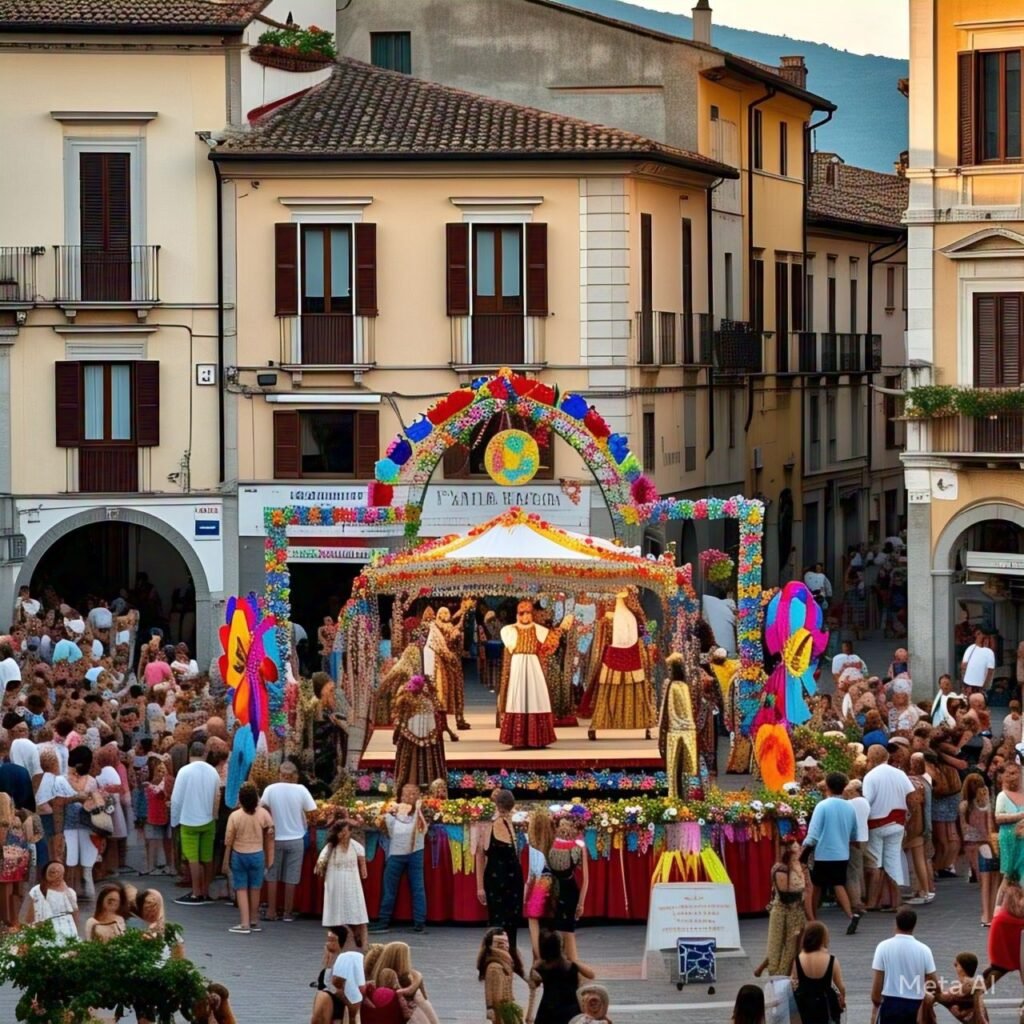
In the small town of Taviano, located in the ‘heel’ of Italy’s boot in Puglia, the Festival de San Martino (St. Martin of Tours) is celebrated on November 11th.
Similar to other fall festivals in towns across Italy’s wine-producing areas, the festival aligns with the vino novello (new wine of the season) harvest.
Taviano’s Festival of San Martino honors the patron saint of wine makers, horsemen and horses, as well as beggars, the impoverished, and those who are injured. As the legends tell, he divided his cloak into pieces to shield a beggar from the cold, so images of the revered saint frequently portray him on horseback, sharing his cloak with a beggar.
The Feast of San Martino in Taviano kicks off on the evening of November 10th, St. Martin’s Eve, with a dazzling sound and light display that turns on the lights hung across Taviano’s Old Town.
Piazza San Martino serves as the center of the celebrations, featuring a Baroque church erected in 1635 that dominates the plaza. Devotees lift the statue of San Martino from its place in the church and carry it on their shoulders at the front of a procession led by priests and dignitaries.
Brass bands march along the cobbled streets, with locals and anyone wishing to take part joining in.
The festival blends elements of carnivale and Thanksgiving, featuring seafood feasts, regional delicacies, and wines from Puglia’s Salento region, all accompanied by extensive merrymaking in the narrow winding streets, bars, cafes, and restaurants.
The UK’s Bonfire Night

One of the more unusual festivals in the UK is Bonfire Night. The now widely attended family event featuring impressive fireworks displays (usually with a large bonfire) has some rather foreboding origins.
The popular saying “Remember remember, the 5th of November” is linked to the festival – but what is the reason for remembering this date? What is the reason for having fireworks on this date?
The 5th of November marks the date when the infamous Gunpowder Plot was thwarted, in which Guy Fawkes and his co-conspirators intended to detonate explosives at London’s Houses of Parliament to kill King James I, who was the reigning monarch at the time.
The conspiracy never materialized; their betrayal was uncovered, and every one of the conspirators faced a brutal demise (Fawkes is notorious for being hung, drawn and quartered). Centuries later, the event has transformed from a boisterous commemoration of the conspirators’ defeat into the family-friendly occasion we recognize today.
I believe that witnessing the fireworks should be one of your top priorities in London, as this is where the action of the plot first took place.
There are many locations in the city from which to view the fireworks. Some displays, such as those on Blackheath Common, are free, while others, like those at Battersea Park, require payment. As they do fill up, it’s advisable to check in advance and arrive early at your selected destination.
Shinbyu ceremonies in Myanmar (Burma)

While I was standing by the roadside in a village close to Bagan, I felt that something important was taking place. Beyond the large ornate gate painted in red and gold, the sound of drums was approaching from a distance.
Young women adorned in brightly hued dresses were at the forefront of the procession, distributing lotus flowers. I then took a breath as a young boy, dressed like royalty, entered through the gate in a golden horse-drawn carriage.
A ceaseless procession of these young boys marched through the village. Some were lounging on golden chairs mounted on the horses, while others occupied lavish carriages pulled by various kinds of creatures.
The Shinbyu Ceremony is held to introduce young boys to the local monastery as novice monks. This ceremony marking the transition to adulthood is rooted in Theravada Buddhism and thought to bless a family with good luck; it holds immense importance in Burmese culture.
The boys are led by the procession to the monastery, where they undergo the ceremonious shaving of the head (hsan cha) and exchange their silk robes for saffron-coloured ones.
Once the families and their sons go their separate ways (often for the first time in the boy’s life), the village organizes a celebration. This entails a communal dining experience, dancing, and various other acts.
While I was observing the procession, the villagers surprised me by inviting me to partake in their meal. I felt deeply honored to be embraced as part of this special celebration.
As each local monastery chooses a day for it, there is no fixed date to experience Shinbyu. The period of the New Year Festival is generally when these traditions are observed.
The New Year Festival date varies since it is determined by the Burmese calendar, but it typically occurs in mid-April.


